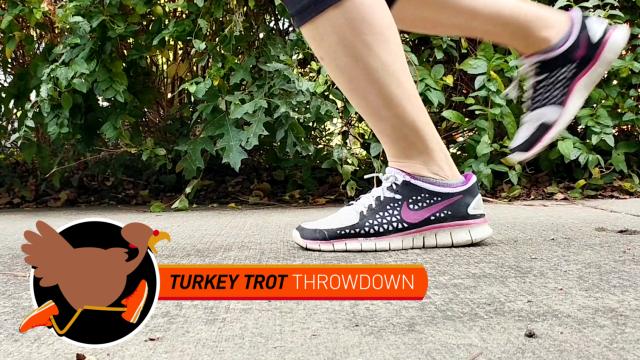You’ve set your goal and hopefully gone for a few runs by now. (If not, it’s never too late – look out for our guiding on starting later today!) Now it’s time to take a closer look at how you run. Fix your form now, and you’ll be able to run smoother and faster in the future. We’ll start with something simple: Count how many steps you take per minute.
Photo by Beth Skwarecki.
To count your cadence, use any timer on your phone, or a watch if you wear one. During one full minute, count the number of times your left foot hits the ground. (Counting one foot is easier than counting both.) Double that number to find your total number of steps per minute.
Why are we doing this? Because quick, light steps are easiest on our bodies. The higher your cadence, the better. Everybody is different, but a good rule of thumb is that your cadence on an easy run should be at least 170 steps per minute.
If your number is a lot lower, you’re not alone. A lot of runners, especially beginners, overstride. This means we run in big long leaps, typically landing on our heel with our leg stretched way out in front of us. Heel striking isn’t automatically bad, by the way — it’s OK if you land with your foot under your body. Check out these pro runners, and watch how they land so lightly on their feet:
Try some of those practice drills to help teach your body good form. And then, when you go out for your next run, try to step a little quicker and see how that feels.
When you do, pay attention to your breathing and your effort level. You should be taking tiny baby steps so that even though you’re stepping faster, you aren’t working harder. And don’t expect to hit 170 right away; if you’re at 130, see if you can do 140 instead.
To help you keep that quicker cadence, try listening to a metronome like the one in iSmoothRun (iOS). If you prefer music, use Spotify Running to serve up a playlist synced to your preferred running tempo. You can also create a custom playlist with Splyce or similar BPM analysis tools.
So, try this out, and let us know how it goes! Feel free to chime in on how the first week of the Lifehacker Fitness Challenge treated you, too.
This post is part of the Lifehacker Fitness Challenge, a series of mini challenges to spark (or reignite) your love of running.

Comments